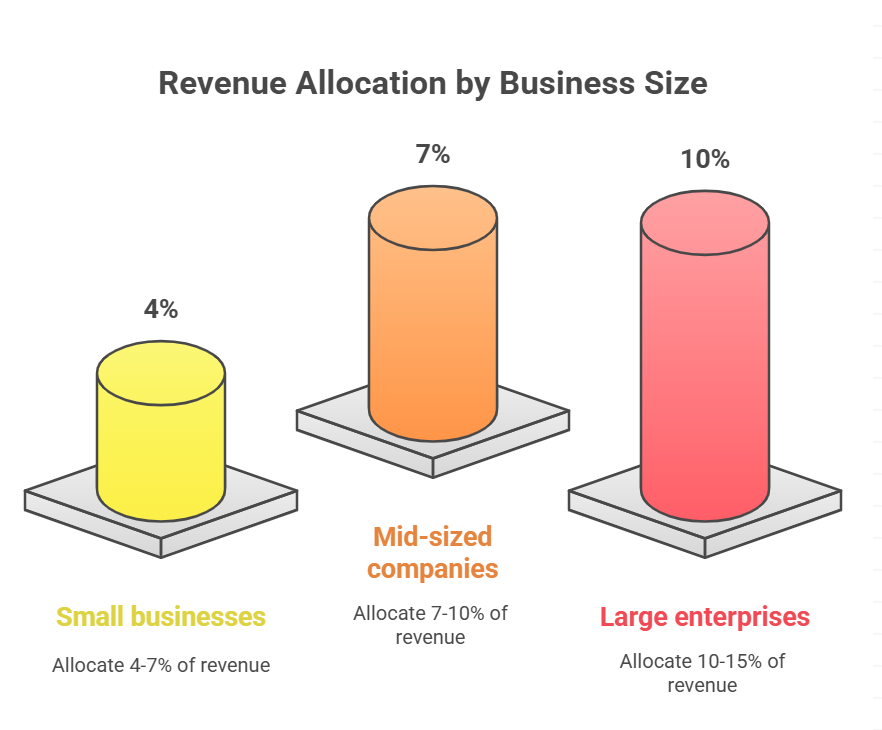Information technology budget is a financial plan that outlines how much your organization will spend on technology over a specific period—usually a year. This includes everything from hardware and software to cloud services, cybersecurity, IT staff salaries, and even training.
Why Is the IT Budget So Important?
Your IT budget isn’t just a line item—it’s a strategic tool. It determines what technology you can invest in, how you’ll protect your data, and how quickly you can adapt to new opportunities or threats. In 2025, with digital transformation at the heart of every industry, your IT budget can make or break your business.
Budgeting for IT: The New Rules in 2025
Budgeting for IT has changed dramatically in recent years. Gone are the days when you could just buy a few computers and call it a day. Now, you need to think about cloud subscriptions, remote work tools, AI-powered analytics, and ever-evolving security threats.
The Shift to OPEX Over CAPEX
One of the biggest changes in IT budgeting is the move from capital expenditures (CAPEX) to operational expenditures (OPEX). Instead of buying expensive hardware upfront, more companies are opting for subscription-based services—think SaaS, IaaS, and PaaS.
Real-Life Example
“We used to spend a fortune on servers every few years. Now, with cloud services, our IT budget is more predictable, and we can scale up or down as needed.”
Key Components of an IT Budget
A well-structured IT budget covers several categories. Here’s what you should include:
Hardware
- Computers, servers, networking equipment, mobile devices
- Replacement cycles and upgrades
Software
- Licenses for operating systems, productivity suites, industry-specific tools
- SaaS subscriptions
Cloud Services
- Storage, hosting, backup, disaster recovery
- Cloud-based collaboration and communication tools
Cybersecurity
- Firewalls, antivirus, endpoint protection
- Security audits, compliance tools, employee training
IT Staff
- Salaries, benefits, training, certifications
- Outsourced IT support or managed services
Maintenance and Support
- Warranties, repairs, helpdesk services
Innovation and R&D
- Pilots for new technologies, proof-of-concept projects
Budgetplanung IT: How to Plan Your IT Budget
If you’re searching for budgetplanung IT (IT budget planning), you’re probably looking for a structured approach. Here’s a step-by-step process that works in 2025:
Assess Your Current State
- Inventory all hardware, software, and services
- Review current contracts and licenses
- Analyze usage and performance
Align with Business Goals
- Meet with department heads to understand their needs
- Prioritize projects that support growth, efficiency, or compliance
Forecast Future Needs
- Consider upcoming projects, expansions, or regulatory changes
- Factor in technology trends (AI, automation, remote work)
Build in Flexibility
- Set aside a contingency fund for unexpected needs or emergencies
Track and Adjust
- Monitor spending throughout the year
- Adjust as business needs or technology change
The Biggest Challenges in IT Budgeting
Budgeting for IT isn’t always smooth sailing. Here are some common pain points:
Unpredictable Costs
Cloud services and SaaS can be hard to forecast, especially if usage spikes unexpectedly.
Security Surprises
A single cyberattack can blow your IT budget out of the water. Investing in prevention is key.
Shadow IT
Employees sometimes buy their own software or services, creating hidden costs and security risks.
Keeping Up With Change
Technology evolves fast. What you budgeted for in January might be obsolete by December.
How to Build a Future-Proof IT Budget
Want your budget for IT to stand the test of time? Here are some expert tips:
Prioritize Security
Don’t skimp on cybersecurity. The cost of a breach is almost always higher than the cost of prevention.
Embrace the Cloud
Cloud services offer flexibility and scalability, but monitor usage to avoid surprise bills.
Invest in Training
Your people are your biggest asset. Budget for ongoing training to keep skills sharp.
Plan for Innovation
Set aside funds for pilot projects and new tech. Staying ahead of the curve can give you a competitive edge.
IT Budget Trends in 2025
What’s new in the world of IT budgeting? Here are some trends to watch:
AI-Driven Budgeting Tools
AI-powered analytics can help you forecast costs, identify waste, and optimize spending.
Sustainability
More companies are budgeting for green IT—energy-efficient hardware, e-waste recycling, and carbon-neutral cloud providers.
Zero Trust Security
Budgets are shifting toward zero trust architectures, with more spending on identity management and endpoint security.
Hybrid Work Support
With remote and hybrid work here to stay, budgets now include collaboration tools, secure VPNs, and home office stipends.
Real-World Example: IT Budget in Action
Let’s say you run a mid-sized marketing agency. Your information technology budget might look like this:
- $40,000 for cloud-based creative software (Adobe, Canva, etc.)
- $25,000 for new laptops and mobile devices
- $15,000 for cybersecurity tools and training
- $10,000 for IT support and maintenance
- $5,000 for innovation projects (AI-powered analytics, automation tools)
User Quote
“We review our IT budget every quarter. It helps us spot trends, cut waste, and make sure we’re investing in the right areas.”
Budgeting for IT: Common Mistakes to Avoid
Even experienced managers can fall into these traps:
Underestimating Security Needs
Don’t wait for a breach to invest in protection.
Ignoring Hidden Costs
Licensing, support, and integration fees can add up fast.
Failing to Plan for Growth
If your business is expanding, your IT needs will too.
Not Involving Stakeholders
Get input from all departments to avoid surprises and ensure buy-in.
Budgetplanung IT: Tools and Templates
Looking for help with budgetplanung IT? There are plenty of tools and templates available in 2025:
- Cloud-based budgeting platforms: Integrate with your accounting software for real-time tracking.
- IT budget templates: Downloadable spreadsheets to help you organize and forecast.
- AI-powered analytics: Identify trends and optimize spending.
The Role of the CIO in IT Budgeting
In 2025, the Chief Information Officer (CIO) is more than just a tech expert—they’re a strategic partner. The CIO works with finance, HR, and operations to ensure the IT budget supports the company’s overall goals.
Key Responsibilities
- Align IT spending with business strategy
- Communicate the value of IT investments to stakeholders
- Monitor ROI and adjust as needed
Budget for IT: How Much Should You Spend?
There’s no one-size-fits-all answer, but here are some benchmarks:
- Small businesses: 4-7% of revenue
- Mid-sized companies: 7-10% of revenue
- Large enterprises: 10-15% of revenue
Your actual budget for IT will depend on your industry, growth stage, and risk tolerance.

How to Justify Your IT Budget
Getting buy-in for your IT budget can be tough. Here’s how to make your case:
Link Spending to Business Goals
Show how each investment supports growth, efficiency, or compliance.
Highlight Risks
Explain the cost of doing nothing—lost productivity, security breaches, or missed opportunities.
Use Data
Leverage analytics to show ROI, usage trends, and cost savings.
Budgeting for IT in a Remote-First World
Remote and hybrid work have changed the game. Your IT budget now needs to cover:
- Secure remote access (VPNs, firewalls)
- Collaboration tools (video conferencing, chat apps)
- Device management and support for home offices
Budgetplanung IT: International Considerations
If your company operates globally, your IT budget needs to account for:
- Currency fluctuations
- Local compliance and data privacy laws
- Regional tech support and infrastructure
The Risks of Underfunding Your IT Budget
Cutting corners on your IT budget can have serious consequences:
- Increased risk of cyberattacks
- Outdated technology and lost productivity
- Difficulty attracting and retaining top talent
The Benefits of a Well-Planned IT Budget
On the flip side, a smart IT budget can:
- Boost efficiency and innovation
- Improve security and compliance
- Support business growth and agility
How to Review and Adjust Your IT Budget
Don’t set it and forget it. Review your IT budget regularly—at least quarterly. Look for:
- Overages or underspending
- Shifts in business priorities
- New technology opportunities
FAQs
Q. What should be included in an information technology budget?
A. An IT budget should cover hardware, software, cloud services, cybersecurity, IT staff, maintenance, and innovation projects. Don’t forget to include training and contingency funds.
Q. How do you plan an IT budget?
A. Start by assessing your current state, align with business goals, forecast future needs, build in flexibility, and track spending throughout the year. Use tools and templates for budgetplanung IT.
Q. How much should a company spend on IT?
A. It varies by industry and size, but most companies spend 4-15% of revenue on IT. Your budget for IT should reflect your business needs and risk profile.
Q. What are the biggest challenges in budgeting for IT?
A. Unpredictable costs, security threats, shadow IT, and rapid technology changes are common challenges. Regular reviews and flexible planning can help.
Conclusion
Information technology budget is more than just a spreadsheet—it’s your roadmap to growth, security, and innovation. By understanding the latest trends, avoiding common pitfalls, and aligning your IT budget with your business goals, you can turn technology from a cost center into a competitive advantage.
CLICK HERE FOR MORE BLOG POSTS
John Authers is a seasoned and respected writer whose work reflects the tone, clarity, and emotional intelligence that readers value in 2025. His writing blends deep insight with a natural, human voice—making complex ideas feel relatable and engaging. Every piece he crafts feels thoughtful, original, and genuinely worth reading.

